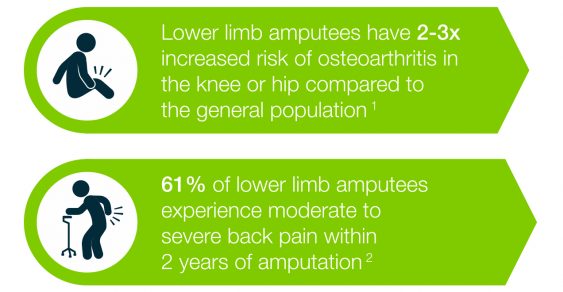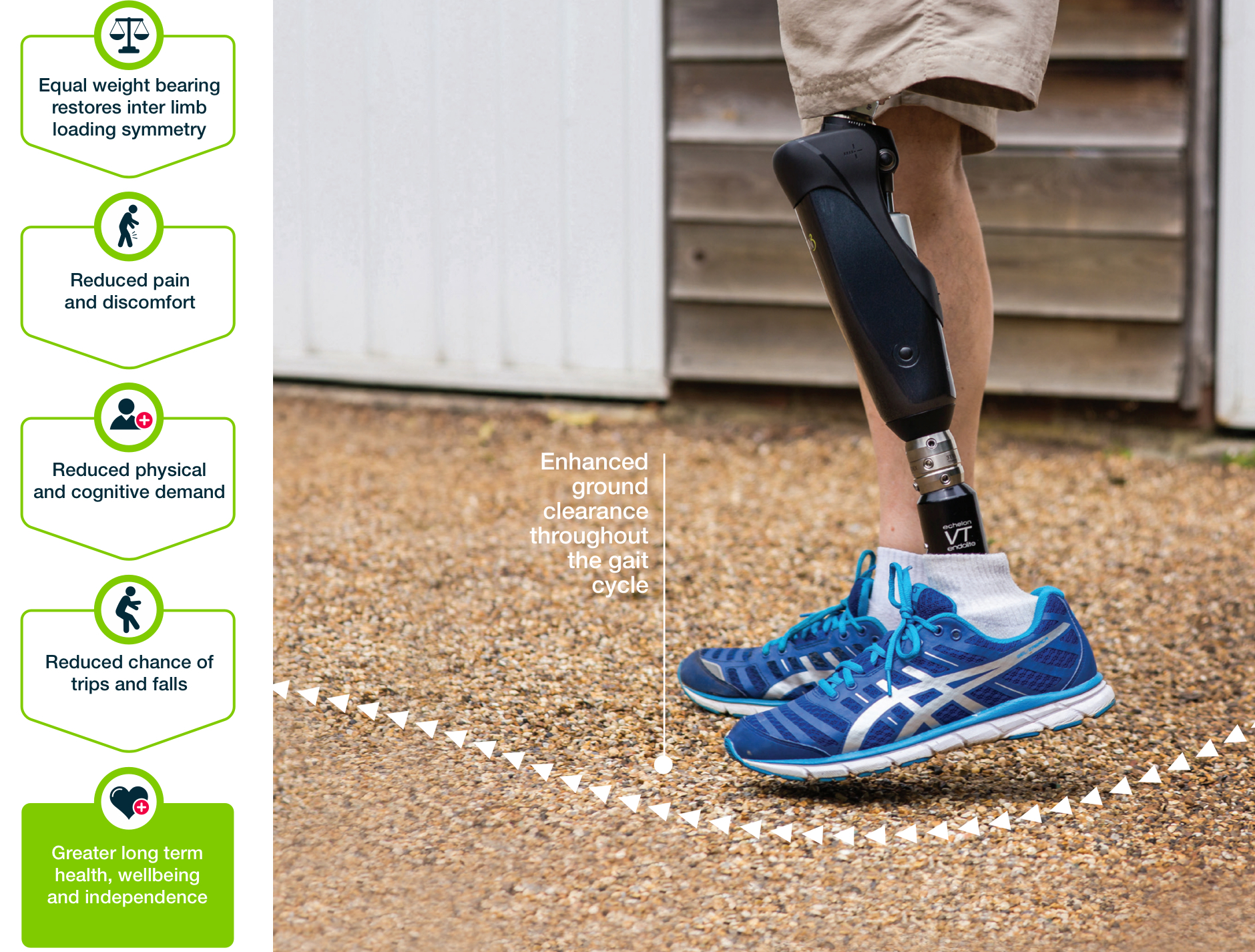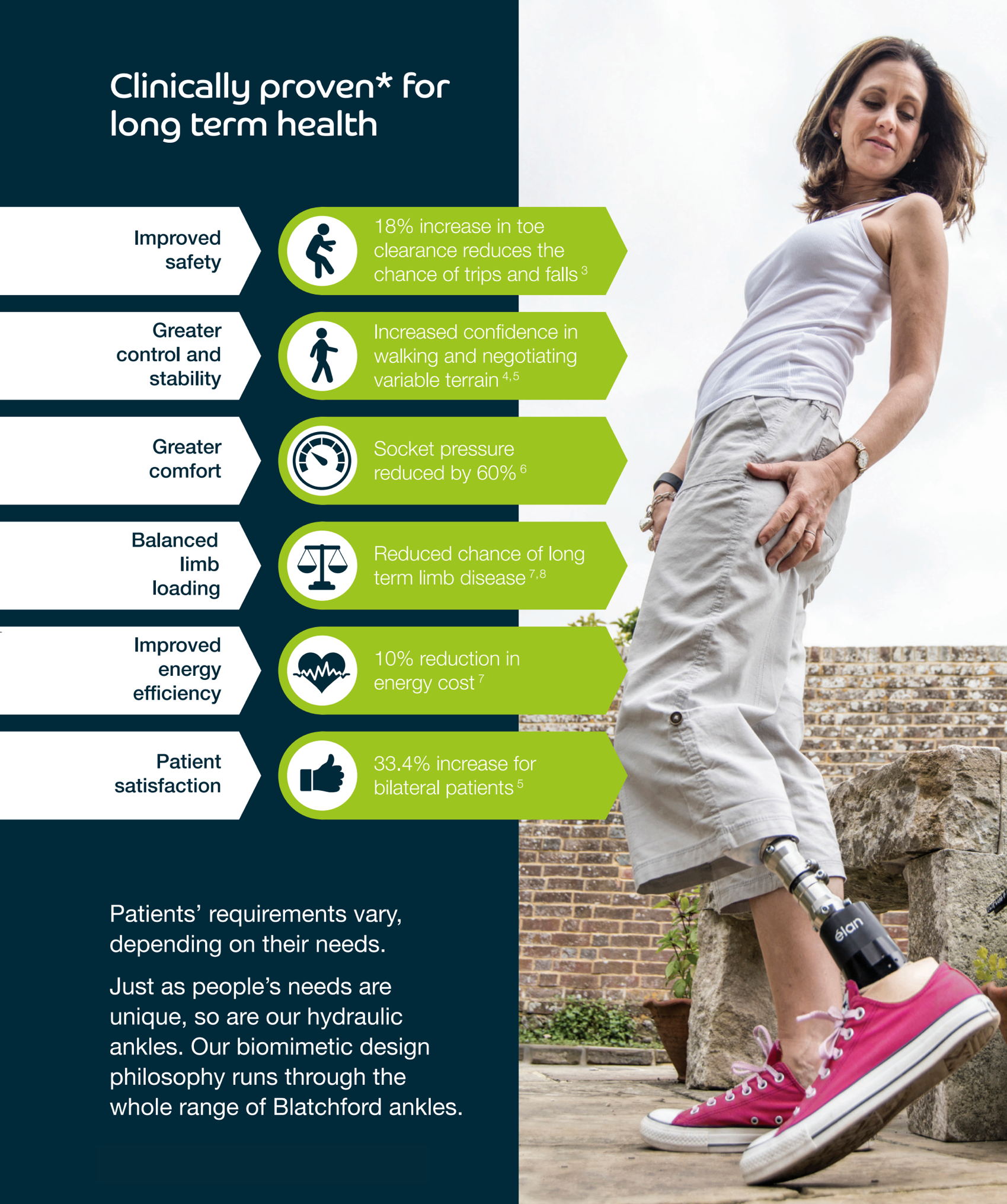Why Hydraulics?
Lower limb amputees can face health issues long after amputation, and it is the consideration and management of these issues that are crucial to the sustained health of every patient.

We believe long-term musculoskeletal health depends on the replication of the dynamic and adaptive qualities of natural limb movement. The engineering of nature is the prime source of inspiration at the heart of our biomimetic design philosophy where the development of award-winning prostheses is focussed on the long-term health and wellbeing of every amputee.
The human ankle and foot have four main rocker points that allow us to walk efficiently. By considering the natural function of the foot and replicating its structure through a unique combination of design elements, Blatchford Biomimetic Hydraulic Technology provides a natural and fluid walking experience.

The human ankle foot complex contains 28 bones and 33 joints that work in sequence to provide balance, stability and a seamless walking experience. Blatchford hydraulic ankles respond to the design specifications that natural movement dictates, fine-tuning joint position to align the body for optimum posture and comfort.
By continuously adjusting to absorb and release energy, our hydraulic ankles allow for an efficient roll-over, remaining perfectly aligned with the user for the next step to help reduce the risk of falls.

Biomimetic Design Philosophy
Energy Absorption: Hydraulics absorb energy to minimise tissue stress
Biomimetic Self-alignment: To fine tune joint position for improved posture, gait symmetry and reduced socket interface stress
Adjustment and Control: Fine tuned to the user’s requirements
Viscoelastic: Spring and damper reduce the rate of loading, removing force from the system and therefore the limb

*References
1. Hungerford DS, Cockin J. Fate of the retained lower limb joints in Second World War amputees. J Bone Joint Surg. 1975; 57(1):111.
2. Kulkarni J, Gaine WJ, Buckley JG, Rankine JJ, Adams J. Chronic low back pain in traumatic lower limb amputees. Clinical rehabilitation. 2005;19(1):81-6
3. L. Johnson, A.R. De Asha, R. Munjal, J. Kulkani, J. G. Buckley. Toe clearance when walking in people with unilateral transtibial amputation: Effects of passive hydraulic ankle. Journal of Rehabilitation Research and Development (JRRD) 2014; 51 (3), 429-438
4. V Struchkov, J.Buckley. Biomechanics of ramp descent in unilateral trans-tibial amputees: Comparison of a microprocessor controlled foot with conventional ankle-foot mechanisms. Clinical Biomechanics. 2016, vol32, p164-170
5. I. Sedki, R. Moore. Patient evaluation of the Echelon foot using the Seattle Prosthesis Evaluation Questionnaire. Prosthetics and Orthotics International 2013; 37(3), 250-254
6. S. Portnoy, A. Kristal, A. Gefen, I. Siev-Ner. Outdoor dynamic subject-specific evaluation of internal stresses in the residual limb: Hydraulic energy-stored prosthetic foot compared to conventional energy-stored prosthetic feet. Gait and Posture 2012; 35(1), 121-5
7. A.R. De Asha, R. Munjal, J. Kulkani, J.G. Buckley. Walking speed related joint kinetic alterations in trans-tibial amputees: impact of hydraulic ‘ankle’ damping. Journal of Neuro Engineering and Rehabilitation (JNER) 2013; 10:107
8. Moore R. Effect on Stance Phase Timing Asymmetry in Individuals with Amputation Using Hydraulic Ankle Units. JPO: Journal of Prosthetics and Orthotics. 2016; 28(1):44-8.

